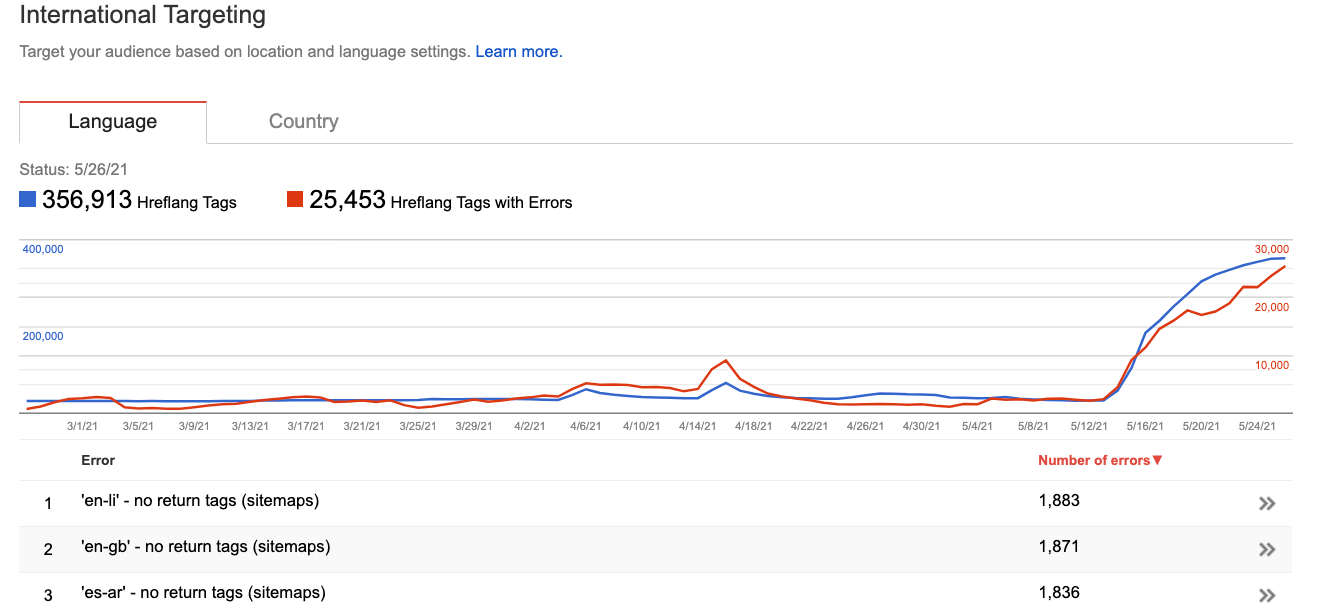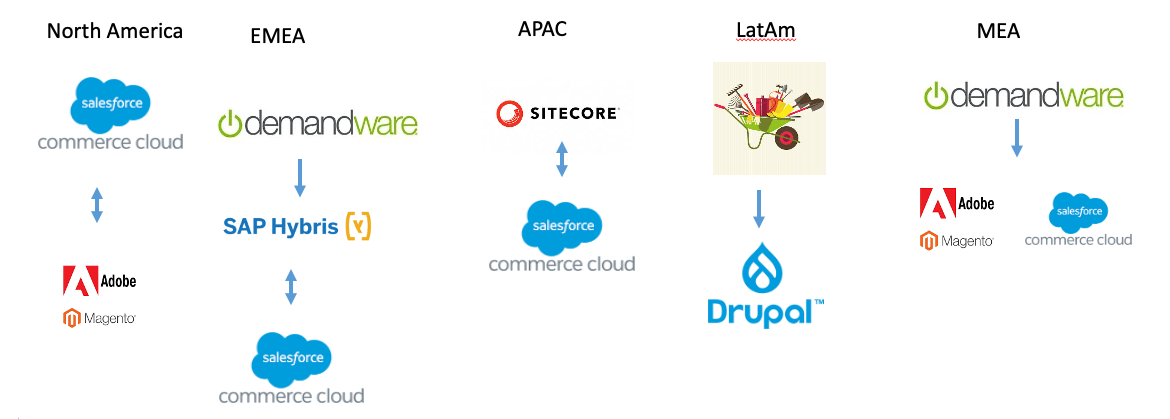
How to Fix HREFLang No Return Tags Errors
June 9, 2021
5 Benefits of Centrally Managing XML and HREFLang Sitemaps
August 16, 2021For many multinationals, there is a never-ending flux of CMS migrations and integrations. The image above shows an example of the various CMS systems used by a single multinational in different regions. It shows that in some regions they no sooner get the CMS installed and the global team is moving to a new one.
For many companies implementing hreflang for a single CMS can be challenging, and is pretty much impossible to do cross-CMS. This makes sense as one CMS cannot edit code in a page created by another. We believe this challenge was made for HREFLang Builder. Using Hreflang Builder’s mapping rules and functionality we can easily map URLs across different systems.
Not being able to deploy hreflang may result in markets being cannibalized by another which will lead to higher bounce rates and increased levels of cart abandonment. This happens most frequently in markets with a similar language like English, Spanish, or Arabic, where a site is better, optimized, more authoritative, or maybe a better user experience resulting in Google ranking it rather than the local site.
Scenario 1 – Multi-CMS Due to Market Decentralization
This is one of the most common scenarios we encounter where a multinational has local market sites on any number of CMS systems with every domain structure you can imagine making alternate alignment nearly impossible. This can also happen with franchise sites that clone the main site. These are pages are considered duplicates of each other so they need to be aligned. HREFLang
Large clusters of sites with different CMS often lack resources where they may not be able to manually implement hreflang may result in these markets being cannibalized by another, which will lead to higher bounce rates and increased levels of cart abandonment. This happens most frequently in markets with a similar language like English, Spanish, or Arabic, where a site is better, optimized, more authoritative, or maybe a better user experience resulting in Google ranking it rather than the local site.
HREFlang Builder clients typically have an average of 3 methods of setting their country and language designations with some over 10 and our most eccentric had 27 different variations. A major consumer product company was having major issues with the wrong market pages appearing globally. For example, the global site was showing up in Singapore rather than the Singapore brand site creating a potential legal issue. In Morocco, 6 separate French-language country sites were represented for their assortment of keywords, and only one Moroccan French page appeared in the search results. In total, they had 187 language/market sites across 18 different Content Management Systems and two sites over 15 years old without any CMS making anything but hreflang XML site maps an option.
Scenario 2 – Blend of Newly Migrated with Old CMS in Markets
We get a lot of sites that have hreflang integrated currently but are moving to or have migrated to a new CMS for one or more markets. Their previous and/or new system is able to add hreflang tags to the pages but only for pages on that CMS requiring them to develop some sort of bridge until they have fully migrated. One client received a quote of over $100k to develop a system to be able to map and inject hreflang tags into the pages.
With HREFLang Builder we only need to know the URL on the old site and the new site which you should already have when you set your redirects. You can create a custom mapping matrix that has the URI for the old URL and the same for the new and add those two columns into the system. We enabled this solution for clients that have spent considerable time mapping URLs. Since we already have the old page mapped to the other language versions by adding in the new variation effectively maps the old to new and new to all other variations.
Suggested Approach for Multi-CMS HREFLANG Challenges
The first step is to sign up for an HREFLang Builder account and then focus on fixing the markets where you have the biggest problems with traffic cannibalized and significant levels of cart abandonment due to price and out-of-market shipping costs. There is no requirement for all or nothing with hreflang. You can start with a few pages and scale over time.
Using our custom mapping matrix feature, brands can set the alternates for those key pages that have been impacted to fix at least those critical pages to recapture traffic and increase customer interactions.
The third recommendation is to leverage cross-domain XML hosting and create a central domain or use a proxy to a location on a primary domain and upload all the XML site maps created by HrefLang Builder. As long as the domains are verified in GSC Google will recognize the XML for all of the domains included in the hreflang sitemaps.
If you have a complex hreflang problem, feel free to reach out and see if we can collaborate to develop an innovative solution for your needs.


